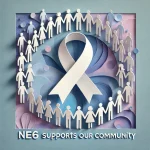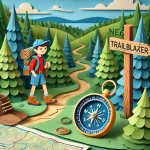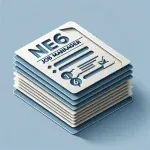Event Photography and Media Coverage Guide (New England Edition)
Disclaimer: The information provided in this NE6 guide is for informational purposes and is designed to assist event organizers in capturing media and photography for promotional use. NE6 assumes no responsibility for the accuracy of media coverage or any legal requirements related to photography or videography. Always secure proper permissions and legal releases from participants.
Hey there! It’s Johnny, and I’m here to help you document your event like a pro and secure the media coverage it deserves. High-quality photos and media attention can turn your event into a must-attend affair and build excitement for future gatherings. Whether you’re hosting a lobster fest in Portland, ME, or a colonial reenactment in Concord, MA, this Event Photography and Media Coverage Guide will walk you through capturing every moment and gaining valuable exposure. Let’s dive in!
Overview
Event photography and media coverage are essential for spreading the word about your event, increasing visibility, and creating lasting memories. This guide will cover everything from choosing the right photographers and creating a shot list, to securing media coverage through local press, blogs, and influencers. Whether your event is a small fair or a large festival, let’s make sure it’s beautifully captured and widely covered!
Step 1: Plan Your Event Photography Strategy
Good photography can be the difference between an event that’s forgotten and one that lives on through visuals. Here’s how to plan your event photography.
1.1 Hire Professional Photographers
- Find Local Talent: New England is home to many talented event photographers. Research photographers through local websites, portfolios, and recommendations from other event organizers.
- Pro Tip: Hire photographers whose style aligns with your event’s vibe—whether it’s outdoor, food-centric, or music-heavy. Review their work and ensure they’re skilled at capturing both candid moments and the finer details like food, décor, and interactions.
- Example: For a seafood festival, you’ll want someone who can capture the vibrant colors of the food and the lively atmosphere. For a Vermont craft fair, a photographer skilled in nature and outdoor settings might be ideal.
- Freelancers vs. Agencies: Freelancers can be flexible and affordable for smaller events. For larger events, consider agencies that offer multiple photographers and videographers for comprehensive coverage.
1.2 Create a Photography Shot List
Make sure you capture all the important aspects of your event with a detailed shot list.
- Must-Have Shots:
- Event Highlights: Document key performances, important speakers, and headlining acts.
- Crowd and Atmosphere: Capture the energy of the crowd, wide-angle shots of the venue, and candid moments of attendees enjoying the event.
- Vendor and Sponsor Booths: Show vendors in action, particularly food vendors and sponsors. These shots are valuable for your partners and future promotion.
- Details and Décor: Close-ups of food displays, craft tables, decorations, and unique elements like local crafts or nautical themes.
- Behind-the-Scenes: Capture the hard work that goes into your event—volunteers setting up, performers preparing, or chefs at work.
- Pro Tip: Communicate any special requests with your photographer ahead of time. Make sure they know who the VIPs, performers, or key sponsors are, and focus on these.
1.3 Event Videography
Consider hiring a videographer to create promotional videos for future events.
- Video Highlights: Short videos (30-60 seconds) work best for social media platforms like Instagram or TikTok. Capture the energy of musical performances, vendor interactions, and crowd reactions.
Pro Tip: If your event has specific moments like a fireworks display, musical headliner, or cooking demonstration, make sure to capture these on video for promotional use later.
Checklist for Photography Planning:
- Hire local photographers or videographers based on your event’s needs.
- Create a detailed shot list, including event highlights, crowd shots, vendors, and behind-the-scenes moments.
- Consider using a videographer for future promotional content.
Step 2: Maximize Media Coverage
The right media exposure can elevate your event and build its reputation. Let’s talk about how to secure coverage from local newspapers, blogs, radio stations, and TV networks.
2.1 Create a Media Plan
Identify the best media outlets for your event, whether local newspapers, niche blogs, or regional TV and radio stations.
- Local Newspapers: Reach out to major outlets like The Boston Globe, Portland Press Herald, or Providence Journal. Regional newspapers are always looking for local events to cover.
- Local Blogs and Online Platforms: Niche blogs focused on food, music, or New England tourism are great places to gain attention. Look into platforms like New England Today or BostonChefs.com.
- TV and Radio: Local TV and radio stations love to cover family-friendly, cultural, or community events. Contact news stations like WCVB Channel 5 in Boston or NBC Connecticut.
- Tourism Websites: Submit your event to state tourism boards like Visit Maine or Vermont Tourism. These sites often feature event calendars that attract both locals and tourists.
- Niche Media: If your event has a specific theme (like a seafood festival or craft fair), pitch to niche media and influencers who specialize in food, travel, or historical content.
2.2 Write and Distribute a Press Release
A press release is essential for getting media attention.
- Create a Press Release: Include the who, what, when, where, and why of your event. Make it clear why the event matters to the community.
Press Release Format:- Headline: Make it catchy (e.g., “Taste the Best of Maine at the 2024 Portland Seafood Festival”).
- Body: Describe the event details, key features like performances or vendors, and include a quote from an organizer or sponsor.
- Contact Info: Make sure to include your contact details and a link to your event page for more information.
- Send to Media Outlets: Distribute your press release about 3-4 weeks before the event. Follow up with a personal email or phone call to confirm they received it.
Pro Tip: Include high-quality photos or a link to your event page. Offer media passes or interviews with performers to increase your chances of coverage.
2.3 Invite Influencers and Bloggers
Working with local influencers and bloggers can increase your event’s visibility on social media and reach a younger audience.
- Work with Local Influencers: Invite influencers and bloggers who cover events, food, or tourism in New England. Offer free tickets, VIP access, or behind-the-scenes tours in exchange for social media promotion.
Pro Tip: Look for influencers who have a strong local following or focus on your event’s theme. A food blogger with a regional audience is perfect for a seafood fest. - Create a Media VIP Experience: For larger events, set up a VIP area for influencers, bloggers, and media representatives. Include perks like special performances, private tastings, or exclusive interviews with performers.
Checklist for Maximizing Media Coverage:
- Create a media list including local newspapers, blogs, radio, and TV stations.
- Write and distribute a press release 3-4 weeks before the event.
- Work with local influencers and bloggers to promote your event on social media.
Step 3: Capture the Event in Real-Time
Capturing real-time content during your event keeps the excitement going and builds engagement online.
3.1 Assign a Social Media Team
Have someone on your team dedicated to live posting and engagement during the event.
- Social Media Manager: Designate a person responsible for posting updates, sharing Instagram stories, and responding to attendee questions on social media.
Pro Tip: Use NE6’s platform to engage directly with attendees—share live updates, answer questions, and promote key moments like performances. - Use Event Hashtags: Create a unique hashtag (e.g., #PortlandSeafoodFest or #NECraftFair) and encourage attendees to use it in their posts. Share attendee-generated content on your official social media pages.
3.2 Live Stream Key Moments
Live streaming brings your event to those who couldn’t attend and increases engagement with your audience.
- Go Live: Use Instagram or Facebook Live to broadcast major moments like musical performances, cooking demonstrations, or interviews with vendors.
Pro Tip: Promote your live stream ahead of time to build anticipation and draw more viewers.
3.3 Capture Attendee Experiences
Set up interactive elements that encourage attendees to share their experiences.
- Interactive Photo Booths: Create a photo booth with props or backdrops that match your event’s theme. Include your event’s hashtag or logo on the photos so attendees share them on social media.
Pro Tip: Provide event-specific props, like lobster hats for a seafood fest or colonial costumes for a reenactment. - Interview Attendees: Capture short video testimonials from attendees sharing their favorite parts of the event. Share these clips on social media or use them in post-event promotions.
Step 4: Post-Event Media Follow-Up
Even after your event ends, you can continue generating buzz by sharing photos, videos, and follow-up content.
4.1 Share Event Recap Photos and Videos
Send a post-event press release to highlight your event’s success.
- Post-Event Press Release: Include key highlights, attendance numbers, and high-quality photos. If you broke attendance records or had a notable speaker/performer, make sure to mention it.
Pro Tip: Post event highlights on social media and tag attendees, sponsors, and vendors. This will increase engagement and encourage shares.
4.2 Create a Post-Event Video
A highlight reel is a great way to recap your event and build excitement for future ones.
- Highlight Reel: Keep the video short (1-2 minutes) and feature the best moments—crowds, performances, and unique details.
Pro Tip: Share the video across all platforms—YouTube, Instagram, Facebook—and embed it on your event page for future promotion.
Pro Tips for Event Photography and Media Coverage
- Get Permission: Always obtain written consent from performers and VIPs before photographing or filming them.
- Leverage User-Generated Content: Encourage attendees to share their photos and videos. Repost the best user-generated content on your own platforms.
- Measure Success: Track media coverage and social media engagement post-event. Use this data to improve your strategy for future events.
And that’s your complete Event Photography and Media Coverage Guide! By following these steps, you’ll ensure your event is not only well-documented but also widely shared. Need help with photographers, media outreach, or social media engagement? You know where to find me—I’m here to make sure your event gets the spotlight it deserves!


















Leave a Reply